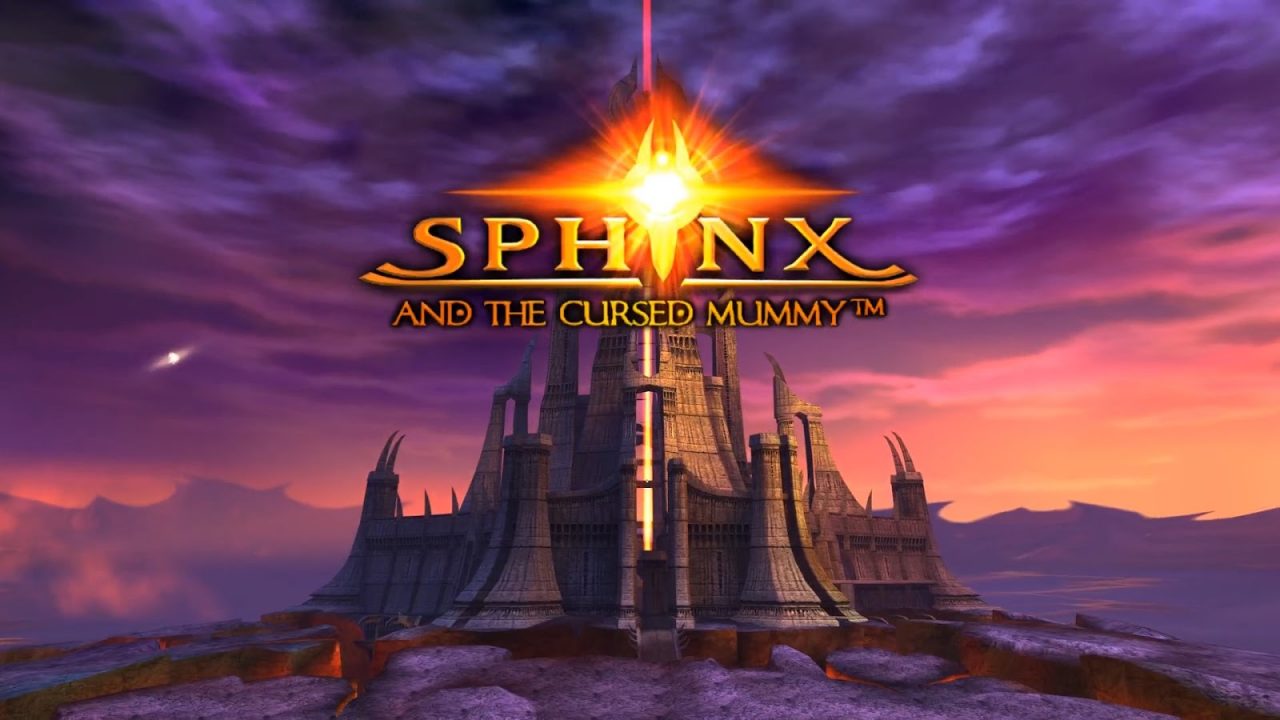Inspired By Zelda: Exploring Ancient Egypt With Sphinx and the Cursed Mummy
Posted on July 15 2020 by Charles Xavier

In the midst of exploring Breath of the Wild‘s vast Gerudo Desert, have you ever thought it might be cool to have a Zelda-like game set in the deserts of ancient Egypt? When I was a kid, I didn’t think I’d ever want this experience, but I got it anyway, and I fell in love! I invite you all to walk like an Egyptian with me as I review of Sphinx and the Cursed Mummy!
This game was released in 2003 by Eurocom, a now defunct game developer, and was published by THQ. The game was available for the Playstation 2, Xbox, and Gamecube, but more recently it was remastered for PC and the Nintendo Switch by THQ-Nordic. I got my hands on the game close to its release back in 2003 because my Dad bought it. What was in store was an awesome Zelda-like adventure around Egypt during a mythical era where gods, demons, and humans co-exist.
While the comparison to Zelda gameplay is conspicuous, this game has plenty of unique qualities to be more than a mere “Zelda clone”. It’s a third-person action/adventure with emphasis on story, and puzzle solving. What makes it stand out is it’s dual narrative following two protagonists, a courageous demigod named Sphinx, and the clumsy Prince Tutankhamen, who, as the title (and history) gives away, is doomed to become a Mummy. At points in the game, the story shifts between these characters, while also drastically changing up the gameplay. When playing as Sphinx, you have more explorative freedom, there are combat segments, and some puzzles to be solved along the way. As the Mummy, you’ll have to use stealth rather than violence as you dungeon crawl through levels and solve puzzles.
Riddle of the Sphinx

To begin, let’s talk about playing as Sphinx. You’ll spend more time with this half feline/half human hero as you explore overworld areas. Plus, with him you’ll have optional side-content to complete. Early on you will be placed into the world with nothing but your wits, tasked to find an ancient blade with your ally, Horus (and he is quite a prick). This area serves as a tutorial section, showing you how to interact with the environment. Eventually, you will acquire the sword, called the Blade of Osiris. Newly armed, you’re ready to hack-n-slash the rest of the way through the level and the game. Now, one of the biggest hurdles to overcome is the lack of a target lock feature, the game works fine without it, but at first it feels odd – especially if you are coming fresh off a playthrough of a 3D Zelda game. You can’t sidejump or backflip to evade attacks, though with this style of combat, you won’t actually need it. Oftentimes enemies will surround you anyway, so focusing on only one of them would be counter-intuitive.
Unfortunately, swordplay never evolves throughout the game. You’ll gain a shield as you progress, but I never saw a need to use it much while in battle. Throughout the entire game, you only gain one extra sword technique, and while it sometimes has a practical use in combat situations, it serves more as a puzzle solution rather than a means to alter combat in a groundbreaking way. That said, the simplicity of the hack-n-slash combat is still a ton of fun, and the solutions to defeat bosses definitely add spice where the typical combat lacks. Additionally, the game weaves a good balance between puzzle and combat segments, making neither aspect feel too drawn out at any given point.
Sphinx will come across dungeons in the overworld, which to no surprise, feature an emphasis between combat and puzzles. These are actually the lengthier dungeons the game offers. Sadly, at first completing them can feel unfulfilling due to Sphinx departing a dungeon without any reward in the form of a new item or upgrade. Instead, he usually leaves with merely a health upgrade and an item that can be traded to progress the story, or unlock a gated portion of the overworld. Yet, this doesn’t detract from the joy of solving the puzzles themselves, and at the very least, Sphinx sometimes comes out of dungeons with a new dart type for his Blowgun.
As for the overworld, the game is split between two main areas that are facing a crisis: the compacted metropolis of Abydos, containing electrified water, and the vast infertile deserts of Heliopolis. You’ll spend more time in the latter, as it is where the dungeons Sphinx can enter are found, and it contains the two main areas that drive the game’s story forward. Still, there is a lot of side content and mini-games to be found in Abydos, plus two side quests that span the majority of the game, making it necessary to always return to this city. You actually first stop here in the game before reaching Heliopolis, later in the game you gain a passport that opens a whole new area of the city. So while this is a Zelda-like game, the progression is almost parallel to that of a 3D Metroidvania. Heliopolis has side content spread around its areas too, so if you need a break from the main quest, you could always have a few hours worth of fun using the atun sun disc pads to swiftly traverse sand dunes while looking for enemies to fight and capture. Obviously, this overworld isn’t deeply immersive, but for the era that this game is from, it was a heck of a lot of fun to explore, and there is still some enjoyment that can be found from doing it modernly for your first time.
Death is Only the Beginning

This game also has a lot to offer with The Mummy’s segments. As much as I enjoy playing as Sphinx, the Mummy is perhaps the stand-out character of the two in both story and gameplay function. While the relationship between Sphinx and The Mummy is symbiotic, and they are both equally important to the overall plot, the Mummy’s story is much more interesting, it deals with betrayal, death, and hopefully redemption. He isn’t heroic at all, he’s just a normal guy; whereas Sphinx is a demi-god who has trained his entire life for an adventure like the one presented in the game. The Mummy’s tale is certainly more remarkable out of the two.
Each area that The Mummy will explore is a self-contained dungeon within a Castle in the land known as Uruk. And since the Mummy is already dead, he is invincible! Thus, a lot of the puzzles involve taking advantage of his death to make him perform morbid acts of pure insanity! Need a torch lit? Make the Mummy jump into a fire, and with his whole body ablaze, he can transport the required flame. Did the Mummy walk under a series of overhanging blades meant to kill an intruder? He’ll be ok, he is just split in three, and you can swap between each version of him to solve the puzzles ahead!
I think most people will walk away from Sphinx and The Cursed Mummy saying the design of the Mummy’s dungeons are the best the game has to offer. The most challenging puzzles in the whole game are definitely in the Mummy’s Chapters.
A Worthy HD Port?

Detaching from my nostalgic opinion of Sphinx and the Cursed Mummy, I think the Switch version is a decent port. I haven’t played the PC version for myself, but I have heard the game doesn’t translate well to keyboard controls. As for on the Switch, the game controls well, the only issues are ones pretty common with the generation of gaming it is from. Movement is sometimes not as reactive as is desired, and the camera controls can be a bit dodgy at times. Combined, this can make platforming in the game challenging. I think it’s a shame that the controls weren’t fine-tuned to avoid carrying over the grievances of video game yester-year. That said, it’s something that can easily be adjusted to, because it certainly isn’t the worst that’s out there.
Back in the Gen 6 days, Sphinx and the Cursed Mummy looked great with it’s cartoonish graphics, and because the original product aged well, the upgraded graphics look even better. However, I’m a little sad that we didn’t get an HD remaster instead, with upgraded texture designs. I also would have loved to see this game given a day/night cycle, I really do feel like the coasts of Heliopolis had potential to be even more breathtaking if there were sunrises and sunsets.
Another upside of the port is that it significantly decreases the loading times of the original game, which was honestly the worst thing about it. Every door you opened, every time you used a Warp Amulet, you’d stare at a loading screen for what felt like an eternity. That wait is cut tremendously with the port, which is awesome!
Currently, Sphinx and the Cursed Mummy is priced at $29.99 USD, and considering retro versions of the game are within the same ballpark, this is the version to buy. I’ve seen it go on sale on the eShop a few times, and honestly that’s the best time to pick it up, so you can feel like you got the best bang for your buck.
To conclude, if you are looking for a unique Zelda-like experience with a decent amount of content, a pretty straight forward but intriguing story, and stellar dungeons, definitely check this game out! For the last 17 years it has stayed within my rotation of games that I replay at least once a year, so I think it’s a great addition to any Zelda fan’s library. Despite all the sand you will see while playing, this game can be an oasis during any dry spell between Zelda games!
Charles is an Editor at Zelda Dungeon. He is a massive fan of Star Wars, The Lord of the Rings, and Marvel Comics. He enjoys Skittles immensely.

Charles is a Senior Editor at Zelda Dungeon. He is a Visual Development artist focused on enviroments and pitch paintings. Check out his Instagram and Twitter to see his latest artworks, a lot of which is Zelda fan art! His favorite candy is Skittles – he feels the world should know this.



